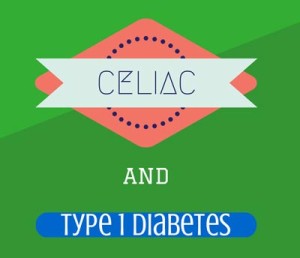Celiac and Type 1 Diabetes in Kids; Should Screening Guidelines be Changed?
June 17, 2014 by Amy Leger | G+ Amy Leger Many of us may have, or know someone who has diabetes. The Centers for Disease Control and Prevention define diabetes as a condition where the “body either does not make enough insulin or can’t use it’s own insulin as well as it should.”
Many of us may have, or know someone who has diabetes. The Centers for Disease Control and Prevention define diabetes as a condition where the “body either does not make enough insulin or can’t use it’s own insulin as well as it should.”
The American Diabetes Association says 29.1 million Americans had diabetes in 2012 and 5% or 1.4 million have type 1 diabetes which usually sets in during childhood or as young adults.
Type 1 diabetes and celiac disease have always been closely linked. They are both autoimmune disorders. The Celiac Sprue Association’s Diabetes and Celiac Disease Fact Sheet reports that the two disorders share the DQ2 and DQ8 genes. The Fact Sheet also says “About 3.5 to 10 percent of individuals with celiac disease develop type 1 diabetes and visa versa [that’s between approximately 49,000- 140,000 children]….When individuals have both diseases, type 1 diabetes is usually diagnosed first. It has been speculated that symptoms of type 1 diabetes are more obvious and therefore easier to diagnose than those of celiac disease.”
Screening for celiac among type 1 diabetes patients is the subject of new research unveiled American Diabetes Association 2014 Scientific Sessions last Friday. The findings, reported by Medscape.com, support the idea of frequent celiac testing after a type 1 diabetes diagnosis.
Celiac and Type 1 Diabetes Study
In this particular study, Evan Graber, DO, a fellow in pediatric endocrinology at Mount Sinai School of Medicine, New York explained that of the 340 type 1 diabetics in the study, nearly 10% or 33 of the patients received a diagnosis of celiac disease. 22 of the patients were diagnosed with celiac between their diabetes diagnosis and 5 years post diabetes diagnosis. The other 11 were diagnosed after 5 years.
Medscape reports Dr. Graber also said during his presentation “Most patients did not have symptoms of celiac disease, and none of the patients with biopsy-confirmed disease had high clinical suspicion prior to diagnosis.” One of the big concerns is finding those folks, who in particular, don’t have (or appear to have) symptoms for celiac, because the longer you go without a diagnosis, the more likely it is that you could get other health problems, like stomach cancer, infertility, or osteoporosis.
The article mentions current “ADA guidelines state that children with type 1 diabetes should be screened for the condition ‘soon after’ diagnosis.” The article says the “International Society for Pediatric and Adolescent Diabetes (ISPAD) recommends celiac screening ‘at diagnosis and then annually for 5 years.'” Graber told Medscape, what they found in this study goes better with the ISPAD guidelines and the ADA’s guidelines might need to be revised.
So what are this report’s recommendations? There is not a simple answer. Researchers believe that doing regular screenings on all people with type 1 diabetes may not be cost effective. However, the concern is raised that they could miss some diagnoses by not screening often enough. The report does say “revision of screening guidelines may be needed to include screening beyond 5 years.”
What does this mean? Well I would say if you have a child with type 1 diabetes, you will want to make sure your child’s doctor is keeping an eye out for possible celiac (even if they don’t appear to have symptoms. And especially if you have a family history). If your child has celiac there are cases where type 1 diabetes has been diagnosed after a celiac diagnosis. Parents should be aware of those signs, which include frequent urination, excessive thirst, unexplained weight loss and more. The CDC’s list of symptoms is good plus it has much more information on diabetes.
* I am not a medical professional. If you have questions about celiac and/or diabetes, please consult your personal medical professional.
Tags: blood, celiac, diabetes, free, gluten, gluten-free, insulin, research, screening, symptoms, test, type 1



June 17th, 2014 at 9:32 am
My husband is diabetic and we spent years trying to figure out what was wrong with him. Both our family doctor and the endocrinologist seemed baffled by the skin condition he was struggling with (DH) as well as his uncontrolled weight loss despite eating more food than he had ever eaten previously. I was so frustrated that it took them so long to finally test him for Celiac. It should have been a routine screening once he became diabetic. I wish I had known back then how close the link between the two was.